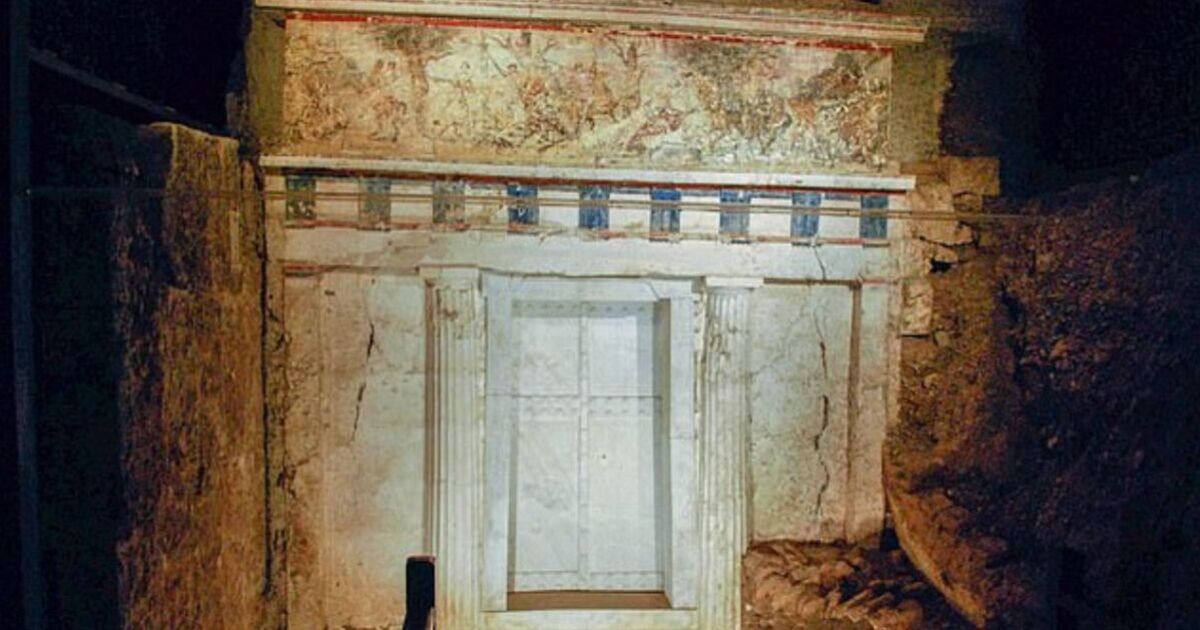A mysterious purple tunic discovered in an ancient Greek tomb belonged to Alexander the Great, scientists have said.
The ‘mesoleucon sarapis’ garment was found in one of three tombs at Vergina in northern Greece 47 years ago.
However, it wasn’t found in Alexander the Great’s tomb but in that of his half-brother, Philip III of Macedon.
Academics believe Philip III inherited the tunic following Alexander the Great’s death in 323 BC.
Alexander the Great was King of Macedon, a northern ancient Greek state, between 336 and 323 BC, when he died at 32.
Today, he is recognised as one of history’s most successful military commanders, having conquered almost all areas of the world known to his people.
It is said he was originally buried in Egypt, but it is believed his body was moved to prevent looting, and now his resting place remains unknown.
Antonios Bartsiokas, a professor of anthropology at the Democritus University of Thrace in Greece, led the study.
In his study, he said: “The physical description exactly fits the description in the ancient source of the sacred Persian mesopleuron seraphic.
“[it] belonged to Pharaoh and King Alexander the Great and such it was the most precious object in antiquity.
“The tunic was found in ‘Tomb II’, one of the three tombs uncovered by archaeologists at Vergina in northern Greece in 1977.”
The tunic, found in a “fragmentary state”, was made up of a cotton textile dyed purple “only used for the elite.”
Because of the state of the garment, the discovery has been misinterpreted over the decades since its discovery, with some academics thinking it could be a mask.
Along with the tunic’s remains, Tomb II also contained other gold artefacts, such as a sceptre, oak wreath, and diadem.
Where the tomb belonged to Philip III of Macedon, Professor Bartsiokas claims that he must have inherited the treasures after his brother’s passing in Babylon.
The two other tombs, Tomb I and Tomb III, belonged to Philip II, Alexander the Great’s father, and Alexander IV, Alexander the Great’s son.
Tomb I also contained the remains of a woman and baby, whom Professor Bartsiokas says are Philip II’s wife, Cleopatra, and their newborn.







